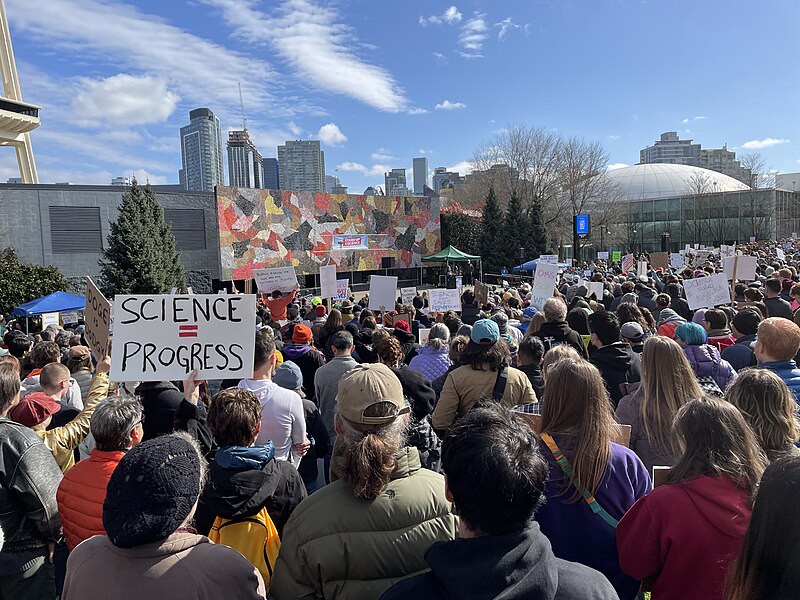As earnings, bonuses and stocks creep back to pre-crisis levels, will markets resume business as usual? A plea for a new kind of investing that blends good sense, good causes and good financial returns.
Adam Smith | April/May 2010 issue
From the moment she arrived in the U.S. from Trinidad and Tobago in 1994, Sherane Berkeley dreamed of owning her own home. But as a single parent with a young son, it wouldn’t be easy. A lousy credit score and little sense of how to go about getting a loan meant Berkeley needed help before making any move. Fed up with her inner-city neighborhood in Washington, D.C., she set out to get it.
In 2004, at a weekly class held by Manna, a D.C.-based group that lifts low-income families onto the property ladder, advisors helped Berkeley budget her money, polish her credit score and learn the steps to owning a home. And when a modern brick-and-siding home renovated by Manna came onto the market in 2007, they offered her favorable terms to buy it.
“Friends say, ‘You don’t come out anymore,’” says Berkeley, 39. “I say, ‘No, I have a home now. I love it.’ The Caribbean Blue in my bathroom reminds me of back home.”
Berkeley—and the hundreds of others helped by Manna—isn’t alone in profiting from the organization’s work. Equally gratified are its investors. One of Manna’s lenders since 2003, the Maryland-based Calvert Foundation, which sets out to blend social impact with financial return through its $200 million fund of investments, has few regrets about its wager on affordable housing. Scores of successful ventures in more than 100 countries allow the foundation to pay its backers, from individuals to large institutions, up to 3 percent interest while boosting poorer communities.
It’s “an opportunity to know my investment is [going] toward those things I care about more,” says Anderson Allen, a 48-year-old office worker in Durham, North Carolina, who placed a portion of his retirement savings with the foundation in 2008. “It’s unambiguously positive for the people trying to make it. I’m writing to friends and family saying, ‘This is something to consider.’”
Right now, investors could do a lot worse. As the financial system dusts itself off from months of chaos, few lessons from the crisis are as palpable as this: When it comes to investing, it’s time for a new approach.
Between homebuyers suckered into seeing real estate as a one-way bet and big institutions caught chasing steeper (and riskier) returns, the reckless pursuit of quick and easy money has lost a lot of its luster. Especially now, as earnings, bonuses and stock markets creep back to pre-crisis levels, rethinking what we need investment to do is crucial.
While investors “believed in a virtual world of money making money,” says Peter Blom, CEO of the ethical Dutch bank Triodos, “the notion that that whole virtual world was an illusion is clear to peoples’ minds.” In other words, what the world needs is a new investing reality.
What that reality will look like depends ultimately on the savers, fund managers, corporate boards and regulators required to see eye to eye on issues worth vast sums of money. The broad objectives, though, are clear enough. Rather than obsessing over double-digit quarterly results, companies and their shareholders need to sign on to longerterm aims to achieve genuine value. Not only is that kind of growth more sustainable, it is more profitable.
Financial returns should not be an investor’s sole measure of success, though. Social and environmental change might once have been the preserve of the charitable sector, but the opportunities for investors to blend good causes with good returns are growing.
And for those same individuals comes an additional responsibility. Before picking a retirement plan or signing up for a mortgage, ask yourself where any return will come from and what will have gone into it. “Money can only be earned if there’s real value creation,” cautions Blom. “And that only happens in the real economy.”
The recent crisis was a calamity brought about by short-term thinking. U.S. equity, fixed-income and mutual funds held onto their assets for an average of 17 months back in 1980, according to the investment research firm Morningstar. These days, that’s down to less than a year. For David Blood, senior partner at the sustainable fund Generation Investment Management, that means investing “isn’t what we’re currently doing in mutual funds.” Instead, Blood said at a conference organized by the Aspen Institute in New York last November, they are “trading.”
There is a big difference between the two. Investors are in it for the long haul, looking to build value and earn money over several years if not several decades. Traders, in contrast, want to get in and get out. Buy low and sell high—as quickly as possible—is their operating method.
That can lead to big problems. The short-term aims of investors can also trump long-range, sustainable targets envisioned by a firm’s management, acting as “a drag on the way business operates, the way economies function and the way individual people work in their daily lives,” says Rebecca Darr, a senior fellow at the Aspen Institute.
Investors get sold short, too. The more a fund manager churns the assets in a portfolio, the higher the trading costs deducted from any investor gains. And with little intention of sitting on stocks, short-term shareholders aren’t likely to wield their voting rights to influence aspects of management—corporate governance, say, or environmental policy—that might deliver long-term benefits.
Slowing down capital would do a lot to encourage more sure-footed growth. Generation Investment Management, for one, a fund Blood co-founded with former vice-president Al Gore in 2004, puts a long-term outlook at the heart of its strategy. Crucial to picking the right kind of stocks: calculating a company’s sustainability as a function of more than its earnings. Funds like Generation scrutinize a firm’s social and environmental performance as closely as its financial one, based on the belief that companies paying attention to these externalities do better by shareholders in the long run.
“It’s about looking at underlying structural shifts in the industry, and which firms are best placed to take advantage of that,” says Andrew Howard, a London-based executive director at GS Sustain, a research unit of Goldman Sachs investment banking firm that blends economic analysis with consideration of dozens of environmental, social and governance factors. The results are encouraging: A fund set up by the bank in 2008 to act on the recommendations of GS Sustain trumped the benchmark MSCI World index last year by 8 percent.
Still, convincing greater numbers of investors to take a long view will require more than healthy returns. For one thing, incentive structures that reward asset managers for short-term performance aren’t doing much to convert them to the long run. Most “are compensated on a one-year basis, or worse, a quarterly basis,” Blood said at the Aspen Institute conference. “If you’re compensating your investment managers on a quarterly basis, you should not be surprised if they act that way.”
Adjusting shareholders’ voting rights might help change that. Granting a voice only to those holding shares for longer than, say, three years could help shield a company’s long-term ambitions. So could the kind of dual-stock structure put in place at Google. While its Class A shares are traded freely on the NASDAQ stock exchange, only a tight bunch of insiders get to hold Google’s Class B shares, which carry 10 times the voting power.
Sweetening the returns available to the original investors would also allow for more sustainable growth. In last September’s call for governments to do more to reward long-term investment, the Aspen Institute—backed by more than two dozen signatories, from philanthropist Warren Buffett to ex-World Bank boss James Wolfensohn—recommended levying capital gains tax on a sliding scale based on the length of time an asset is held.
“We need to make fundamental changes in the economic incentives that drive decisions in the public and private sectors,” John Olson, a senior partner at the law firm Gibson, Dunn & Crutcher in Washington, D.C., and one of the Aspen signatories, remarked at the time. “I see real danger in settling for cosmetic reforms that don’t address the critical problem: failure to aim for long-term sustainable value.”
There are some encouraging signs, however. Sure, it took time, but in recent years, governments, businesses, investors and individuals have managed to put aside short-term interests to agree on another “more mature truth,” as Terrence Mollner, founder of the Calvert Foundation, calls it. Namely, “that we need to consciously, together, manage the resources on the planet to survive.”
Here’s another mature truth: When it comes to treating the world’s social or environmental ills, charitable funds and government coffers are not enough to get the job done. Stomach-churning financial crises don’t help, either. State funds and benevolence can foster real change. But to deliver change on a larger scale, and to make sure the recipients of charitable giving don’t become dependent on philanthropy, investors need to flex even greater financial muscle.
“While philanthropy and government aid are critical and precious resources, we need a way to leverage private capital,” says Amit Bouri, director of strategy and development at the Global Impact Investing Network (GIIN), a New York-based grouping of major banks, charitable foundations and social investment funds. “The combination of a profit-seeking motive [and] good intentions is a complicated mix but it has a tremendous amount of potential.”
At the same time, “impact investing”— finance that teams social or environmental goals with monetary ones—is beginning to gain real momentum, helping Berkeley into affordable housing in D.C. and distributing clean energy across Nicaragua, to name just two projects funded this way.
Investors’ motives range as widely as the projects they fund. To major philanthropic organizations like The Rockefeller Foundation, impact investing offers a chance for already hardworking cash to stretch that much further. Wealthy individuals might be lured by the entrepreneurship typical of the sustainable businesses looking for a financial helping hand. For big pension funds like New York’s Teachers Insurance and Annuity Association-College Retirement Equities Fund (TIAA-CREF), supporting emerging market projects in sectors outside the mainstream, as many funds targeted by impact investors are, diversifies risk.
And none would quibble with the chance to do good with cash in the process of making a profit. The result: Impact investments could hit $500 billion within the next five to 10 years, according to Monitor Institute, the part of the U.S. management consulting firm Monitor that focuses on social and environmental challenges. “We’re at a very nascent stage” in the industry’s development, says Bouri. “We don’t know how big this could get.”
Versus the trillions of dollars bound up in investments concerned only with profit, that is loose change. While it is clear there is money to be made from impact investing—the original investors in Compartamos Banco, for instance, doubled their money each year by the time the Mexican microfinance firm held its initial public offering in 2007—the kind of returns on offer can’t be publicized until more specialist funds complete more investment life cycles.
Putting money into socially minded companies “is still a relatively new concept,” says Whitni Thomas, a London-based investment manager at Triodos, a prominent impact investor. “No one’s had a full life cycle of a fund to be able to point to a track record in the space.”
Like many fledgling industries, the challenges for impact investing go beyond a limited trading history. A lack of coordination among investors and insufficient information sharing or collaboration over deals limit the scale of the sector, not to mention its impact. Scant intermediation between investors and firms needing capital—by consultants with detailed knowledge of the industry, say—also hampers progress. And that’s before the global economic deep freeze gave many potential investors cold feet.
The sector’s toughest challenge: measuring the social and environmental impacts of an investment in a reliable, consistent way. As long as investors can find juicier rates of return elsewhere, asking them to give up a portion of those profits in exchange for social or environmental benefits means being clear about the positive impact their investment could have.
Right now, “it’s incredibly opaque,” admits Bouri. Many investments don’t track the real impact of their cash. Those that do often use competing metrics—Is job creation defined as seasonal employment or full-time work with benefits?—while entrepreneurs might spend too long collecting data to pass on.
Underreporting the potential benefits won’t attract fresh investors; overstating them could divert cash from traditional philanthropy. “High-net-worth individuals get it. Charitable trusts understand it. The social side is what they do day in day out,” says Thomas. “If we want to crack the rest of it, we need to show in a tangible way what [impact] this investment is having.”
To that end, progress is at least being made. The Rockefeller Foundation, impact investors the Acumen Fund as well as B Lab, a Pennsylvania-based firm that rates and certifies corporations’ social or environmental impacts, have collaborated over the development of Impact Reporting and Investment Standards (IRIS), piloted by the principals of a group of investment funds in 2009. An updated version should be ready for a wider rollout later this year. Initiatives like that ought to help more investors like Durham office worker Allen put their money to good use. “Without necessarily prospering at the top level,” he says, using savings to help bring about positive change means “enjoying your relationship to your investments.”
Never having owned a home, or even a car, and with a chunk of his nest egg accruing modestly thanks to good causes, Allen hardly fits the profile of the boom time investor. But he may well be a model for the investor to come. As we save and invest, says Triodos’ Blom, we each “become a simple bank unto ourselves,” with one individual’s money meshed with the fortunes of another.
If we don’t want to be left high and dry by the collapse of yet another virtual economy, we need to get back to reality. But first, we have to make that reality ourselves—and that means investments of another kind: in time and attention. “Study the economy,” counsels Mollner. “If you’re going to live in a capitalist society and have savings, you’re going to have a second job: studying the economy.”
Adam Smith, a writer based in London whose daughter was born recently, is going long on diapers.










